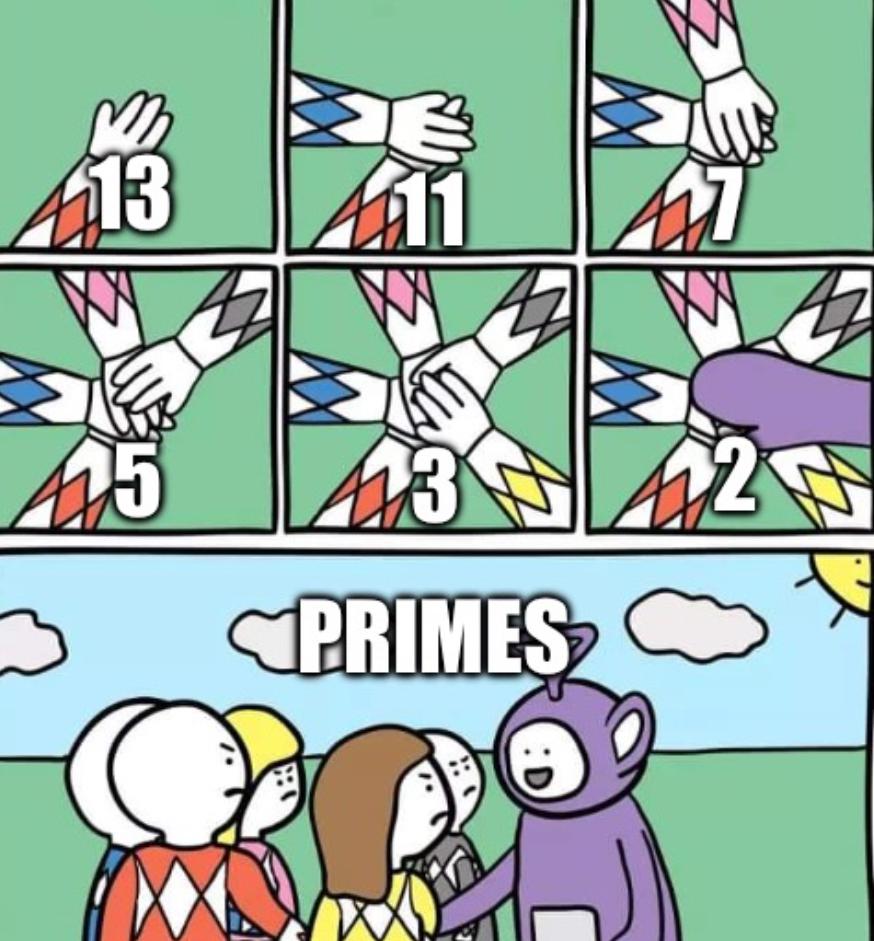this post was submitted on 09 Aug 2023
630 points (94.9% liked)
Memes
45741 readers
1382 users here now
Rules:
- Be civil and nice.
- Try not to excessively repost, as a rule of thumb, wait at least 2 months to do it if you have to.
founded 5 years ago
MODERATORS
you are viewing a single comment's thread
view the rest of the comments
view the rest of the comments

Isn't 1^n just 1? As in not a new number. I'd argue that 1*1==1*1*1. They're not some subtly different ones. I agree that the concept of primes only becomes useful for natural numbers >1.
How is my definition misleading?
It is no new number, though you can add infinitely many ones to the prime factorisation if you want to. In general we don't append 1 to the prime factorisation because it is trivial.
In commutative Algebra, a unitary commutative ring can have multiple units (in the multiplicative group of the reals only 1 is a unit, x*1=x, in this ring you have several "ones"). There are elemrnts in these rings which we call prime, because their prime factorisation only contains trivial prime factors, but of course all units of said ring are prime factors. Hence it is a bit quirky to define ordinary primes they way you did, it is not about the amount of prime factors, it is about their properties.
Edit: also important to know: (ℝ,×), the multiplicative goup of the reals, is a commutative, unitary ring, which happens to have only one unit, so our ordinary primes are a special case of the general prime elements.
Oof, I remember why I didn't study math 😅
But thanks for the explanation
Yeah, higher math is a total brainfuck :D You're welcome.
I was never able to wrap my head around quaternions.
There is multiple things wrong here.
1 is not a prime number because it is a unit and hence by definition excluded from being a prime.
You probably don't mean units but identity elements:
There are more units in R than just 1, take for example -1(unless your ring has characteristic 2 in which case thi argument not always works; however for the case of real numbers this is not relevant). But there is always just one identity element, so there is at most one "1" in any ring. Indeed suppose you have two identities e,f. Then e = ef = f because e,f both are identities.
The property "their prime factorisaton only contains trivial prime factors" is a circular definition as this requires knowledge about "being prime". A prime (in Z) is normally defined as an irreducible element, i.e. p is a prime number if p is not a unit and p=ab implies that either a or b is a unit (which is exactly the property of only having the factors 1 and p itself (up to a unit)).
(R,×) is not a ring (at least not in a way I am aware of) and not even a group (unless you exclude 0).
What are those "general prime elements"? Do you mean prime elements in a ring (or irreducible elements?)? Or something completely different?
You're mostly right, i misremembered some stuff. My phone keyboard or my client were not capable of adding a small + to the R. With general prime elements I meant prime elements in a ring. But regarding 3.: Not all reducible elements are prime nor vice versa.
That's why I wrote prime number instead of prime element to not add more confusion. I know that in general prime and irreducible are not equivalent.